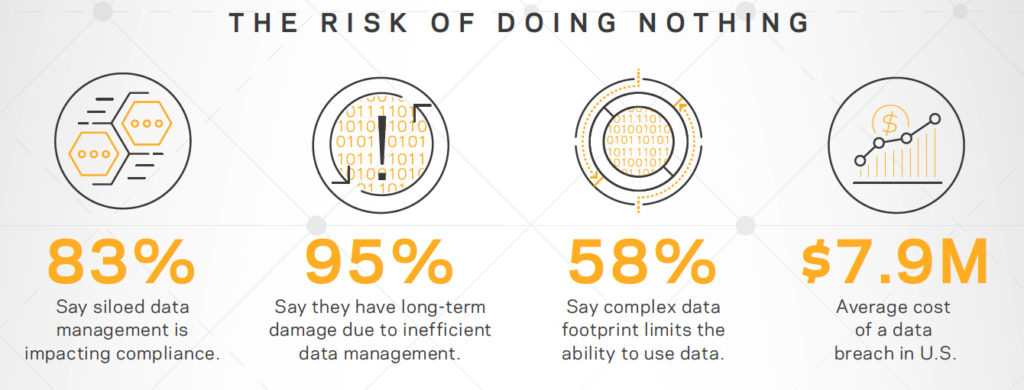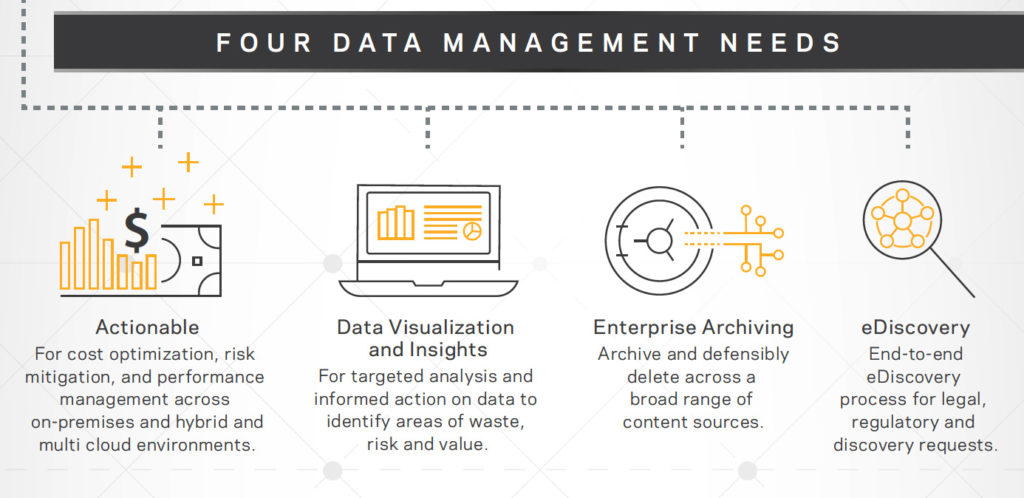
Chief Marketing Officer
You hear the term “unstructured data” often – data that is unorganized or doesn’t follow a structured data model. Gartner’s IT Glossary defines the term as “information assets organizations collect, process and store during regular business activities, but generally fail to use for other purposes.”
Unstructured data is often blamed as the reason why traditional relational databases don’t meet the needs of Big Data. But that conversation doesn’t adequately describe the true challenge organizations face with unstructured data. Read on to find out why.
Most Data Holds Little Legal, Regulatory, or Business Value
Today, we digitize everything we do—and share it all across the enterprise with our partners and our personal connections. And most of it stays un-filed and disorganized in digital documents, presentations, email, graphics, audio and video files.
Unstructured data doesn’t just lack structure. Unstructured data simply doesn’t fit the enterprise relational data model. We also have many employees with unstructured data residing “in their heads,” without ever being captured, managed, or made available to the rest of the enterprise, not to mention analyzed. Without this process (or structure), we can never learn from that data to make valuable business decisions and streamline our processes.
The Staggering Statistics of Unstructured and Dark Data
55% of an organization’s data is “dark” according to new global research by Splunk and TRUE Global Intelligence. And the bulk of that dark data is unstructured. Either they have the data and don’t know it, or they know they have it, but not how to use it. In this scenario, ignorance (or doing nothing) is not bliss. The risks of doing nothing with this data can create compliance issues, inefficiencies in data management and thwart abilities to strategically use the data.
In the same report titled “The State of Dark Data”, 1,300 business across seven countries were surveyed on how they collect, manage, and use data. A third of those surveyed reported that “more than 75% of their organization’s data is dark” while 21% stated “it is hard to find and recover data because of lack of interest from organization leaders.”
Most Unstructured Data = More Business Risk
The more unstructured data you have within your environment, the more business risk you carry. With any amount of unstructured data, the greatest threats to your organization include storage and clutter management.
Best Approach to Unstructured Data: Visibility, Action, and Automation
Despite our best efforts to corral the unstructured beast, unstructured data continues to grow and presents a real problem for organizations that want to automate and improve their ability to understand their businesses, anticipate what’s coming and act quickly on risk and opportunity.
So how do you tame the beast?
First, it’s about gaining visibility, because you can’t control what you can’t see. Next, it’s taking action and making decisions that ensure the right information is where it needs to be. And finally, it’s about building an automated approach that provides a launchpad for sustained information management success.
Effective Data Management Requires More than a Store-Everything Approach
With the potential loss of $20 million in managing unstructured data costs on the table, businesses cannot afford to continue conducting sound business practices without delving into their internal data problem. The unstructured data phenomenon is not going away, and unless you take an informed and disciplined approach in targeting the data drains on your system, the problem will only get worse down the road. The time has come for getting data out of its various hiding places and into a place where it can actually be utilized to grow our businesses and make us smarter.
DataEndure offers a Dark Data Assessment where you’ll receive detailed insights & visibility, advanced analysis, and integrated actions to help shine a light on your dark, unstructured data.

